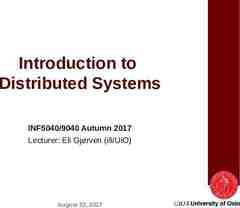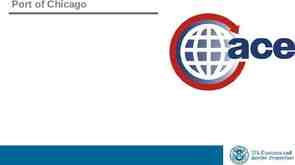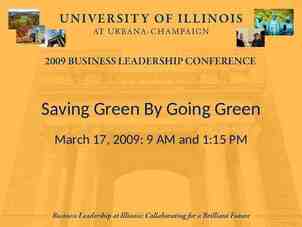DFW Hospital Council Scottish Rite, Frisco TX Judy Embry, PhD
44 Slides3.70 MB

DFW Hospital Council Scottish Rite, Frisco TX Judy Embry, PhD [email protected] November 13, 2019

Goals Lay out the problem How we got here Look toward solutions Describe BSWH Pain Management & Opioid Prescribing Initiative 2

3

4

5

6

7

8

What Happened? Until mid to late 1980s, opioids were reserved for cancer patients and palliative care or only used for short durations. 1986: Dr. Russell Portenoy argued that opiates could be taken safely for chronic pain, less than 1% of opioid users became addicted, opiates were easy to discontinue, and overdoses were extremely rare in pain patients. 1990s to early 2000s: American Pain Society, VHA, Joint Commission, CMS all promoted the idea of pain as the “5th vital sign.” 1998: a Federation of State Medical Boards policy statement reassured doctors that they wouldn’t face regulatory action for prescribing even large amounts of narcotics, as long as it was in the course of medical treatment. Insurance companies found an opportunity to increase end-of-the-year profits, as opioids are less expensive than multidisciplinary treatment. Pharmaceutical companies said to have mislead physicians. US culture entered “age of pharmaceuticals.” VERY little education on pain management in US medical schools. 9

10

11

12

Do you and your providers know? 13

Differences in these Phenomena Opioid Misuse Opioid Abuse Opioid Dependence Opioid Use Disorder Opioid-Induced Hyperalgesia Acute vs. Chronic Pain Nociceptive/Neuropathic/Centralized/Mixed Pain Evidence-Based Pain Management is multimodal 14

15

16

17

18

19

20

21

22

23

Simply decreasing opioid prescribing is NOT a good (or even ethical) answer. 24

25

BSWH Pain/Opioid Initiative Presentation to BSWH Clinical Leadership Council, chaired by EVP/CMO 2016-17 Presentations to Boards of Directors 2017 Locate allies – like minded individuals throughout the system 2017 Leadership Team 2017 STEEEP Charter 2016 2017

BSWH Pain/Opioid Initiative Presentation to BSWH Clinical Leadership Council, chaired by EVP/CMO 2016-17 Presentations to Boards of Directors 2017 Locate allies – like minded individuals throughout the system 2017 Leadership Team 2017 STEEEP Charter – 2017 BSWH Pain Management & Opioid Prescribing Guidelines 2017 BSWH Controlled Substance Consent & Agreement for Chronic Pain 2017 Acute & Chronic Pain Management & Opioid Prescribing for Outpatients Training Video 2016

INTERVENTION IM and FM Primary Care Providers Higher Prescribers 30-Day opioid prescriptions Central Texas (CTX) CMO – May 2017 HealthTexas Provider Network (HTPN) BOD – August 2017

30-day opioid prescriptions

30-day opioid prescriptions

LINK TO VIDEO TRAILER: https://youtu.be/GHI-d3LGiXI

Response to Video Excellent! Not a REQUIRED learning activity 3,262 BSWH employed individuals have accessed it Access by non-BSWH individuals ? Evaluations: No scores lower than 4.5 on a 5.0 scale Now assigned during onboarding - providers and trainees 34

Current Status of the Initiative BSWH Pain Management & Opioid Prescribing Ambulatory Taskforce Executive Sponsor & Co-Chairs Taskforce Members: MD/DOs, APPs, Nurses, Admin, Pharmacy, Compliance, Informatics, Patient Learning BSWH ED/Inpatient Pain Management Council Executive Sponsor & Co-Chairs Council Members: MD/DOs, APPs, Nurses, Admin, Pharmacy, Compliance, Informatics, Psychology, Analysts, Patient Learning Pain/Opioid EHR Workgroup Tasks: Patient, provider, nursing education Compliance & regulatory Policy advisement Monitoring and reporting EHR enhancements Tools, processes, guidelines Dissemination 35

Embry Role: Multidisciplinary pain management programming and educational efforts PCP case consultations Monitoring and analyzing EHR data for QI and compliance purposes TMB Opioid Workgroup recommendations EHR project – enhancements and reporting related to pain/opioids Hopes/Dreams: Public education – pain management Collaborative Care (CoCM) project Improving access to, and integration of, behavioral health and MAT BSWH inter-professional, integrative, collaborative care efforts Psychiatry and Behavioral Health service line CME/CNE/CE - physicians, APPs, nurses, psychologists, care managers, social work, hospitals. 36

Continuing Education & Other Presentations “Addressing Pain Management & Opioid Prescribing Practices in a Large Healthcare System,” DFW Hospital Council Foundation, Frisco, 2019 “Healthcare Change and Multidisciplinary Efforts: An Initiative to Reform Pain Management and Opioid Practices in a Large Healthcare System,” Collaborative Family Healthcare Association Annual Conference, Denver, 2019 “Under-management of Pain,” Nursing Conference, BSWH,Temple, TX, 2019 “Addiction & Aberrant Behavior,”APP & Nursing Conference: Approaching Pain Management as a Team, BSWH, Waxahachie, TX, 2019 “Pain Management & Opioids,” BSWQA chronic care managers workshop, Dallas, TX, 2019 Facilitator for “Pain Panel,” 2nd Annual Psychopharmacology Primary Care Conference, BSWH, Waco, TX, 2018 “Multimodal Pain Management,” APP Conference, BSWH, Temple TX, 2018 “Physiology & Management of Pain: CBT and Related Therapies,” Integrated Emergency Services Quality Summit, Los Colinas, TX, 2018 “Chronic Pain Co-Treatment,” LCSW Workshop, BSWH, Dallas, TX, 2017 “Pain Chronification,” Pediatrics, McLane Children’s Medical Center, Temple, TX, 2017 “Neurophysiology and Management of Pain,” TAMU College of Medicine students, College Station, TX, 2017 “Cognitive Behavioral Therapy and Pain,” BSWH Anesthesiology Fellowship, Temple, TX, 2017 “Non-Pharmaceutical Treatment of Pain,” BSWH FM Behavioral Health Specialists, Temple, TX, 2017 “TMB Requirements for Chronic Pain/Opioids, BSWH Family Medicine Residents, Temple, TX, 2017 “EBT of Chronic Pain,” BSWH Primary Care Conference, Psychopharmacology, Waco, TX, 2017 “Pain/Opioids Initiative,” HTPN Board of Directors, 2017 “Chronic Pain and Substance Use Disorders,” Navarro Regional Hospital medical staff, Corsicana, TX, 2016 “Chronic Pain,” Complex Care: Treatment Trends & Improved Outcomes, BSWH Primary Care Conference, Killeen, TX, 2016 “Opioid Epidemic and Evidence-Based Treatment of Chronic Pain,” BSWH Clinical Leadership Council, Temple, TX, 2016 “Pathophysiology & Treatment of Chronic Pain,” BSWH Physical & Occupational Therapy Departments, Temple, TX, 2016 “Enhancing Integration of Behavioral Health and Primary Care,” BSWH Family Medicine Clinic, Waco, TX 2016 “Opioids and Pain,” BSWH Podiatry Department, Temple, TX, 2016 “Chronic Pain and Opioids,” BSWH Central Texas Board of Directors, Temple, TX, 2016 “Medically Unexplained Symptoms,” BSWH Family Medicine Residency Faculty, Temple, TX 2016 Multiple seminars for BSWH Psychology Interns, Temple, TX, 2015present “Change Leadership,” BSWH Family Medicine Residency Faculty, Temple, TX, 2015 “Pain Management,” BSWH Schwartz Rounds, Temple, TX, 2015 “Pain Management: Enhancing Your Nursing Practice,” BSWH Nurse Conference, Temple, TX, 2015 “Pain & Its Management,” Webinar for NTX/CTX care managers, 2015 “Neurophysiology & Treatment of Chronic Pain,” eCME for BSWQA, 2015 “Chronic Pain and Its Treatment,” BSWH 18th Annual Advanced Practice Symposium, Temple, TX, 2014 “Pathophysiology and Treatment of Chronic Pain,” Family Medicine Review, Austin, TX, 2013 “Pathophysiology of Chronic Pain” and “Non-pharmaceutical Treatment of Chronic Pain,” multiple presentations to Killeen Family Medicine Clinic, Santa Fe Family Medicine Clinic, Plastic Surgery, Podiatry, Internal Medicine, Killeen and Temple, TX, 20112014 37

38

39

40

OTHER QUESTIONS Did reductions in opioid prescribing result in lower patient satisfaction scores? – Nope (at least not in CTX) As providers decreased 30-day prescribing, did they – Increase use of non-opioid medications - YES – Increase non-pharmacologic interventions and referrals? Stay tuned 41

Bibliography / Reference 1. Farre A, Rapley T. The New Old (and Old New) Medical Model: Four Decades Navigating the Biomedical and Psychosocial Understandings of Health and Illness. Healthcare (Basel, Switzerland). 2017;5(4). 2. Gordon DB, Watt-Watson J, Hogans BB. Interprofessional pain education-with, from, and about competent, collaborative practice teams to transform pain care. Pain Reports. 2018;3(3):e663. 3. Loeser JD, Schatman ME. Chronic pain management in medical education: a disastrous omission. Postgraduate Medicine. 2017;129(3):332-335. 4. Losby JL, Hyatt JD, Kanter MH, Baldwin G, Matsuoka D. Safer and more appropriate opioid prescribing: a large healthcare system’s comprehensive approach. Journal Of Evaluation In Clinical Practice. 2017;23(6):1173-1179. 5. Louw A, Zimney K, Puentedura EJ, Diener I. The efficacy of pain neuroscience education on musculoskeletal pain: A systematic review of the literature. Physiotherapy Theory And Practice. 2016;32(5):332-355. 6. Mostofian F, Ruban C, Simunovic N, Bhandari M. Changing Physician Behavior: What Works? American Journal of Managed Care. 2015;21(1):75-84. 7. Phipps TM, Shortell SM. More Than Money: Motivating Physician Behavior Change in Accountable Care Organizations. Milbank Quarterly. 2016;94(4):832-861. 8. Ward W, Zagoloff A, Rieck C, Robiner W. Interprofessional Education: Opportunities and Challenges for Psychology. Journal Of Clinical Psychology In Medical Settings. 2018;25(3):250-266.

Studies in the United States have shown that 10%–15% percent of HCPs will misuse substances during their lifetime, and rates of prescription drug abuse and addiction are higher among physicians than in the general population, with especially high rates of benzodiazepine and opioid abuse. 43

QUESTIONS & COMMENTS?








